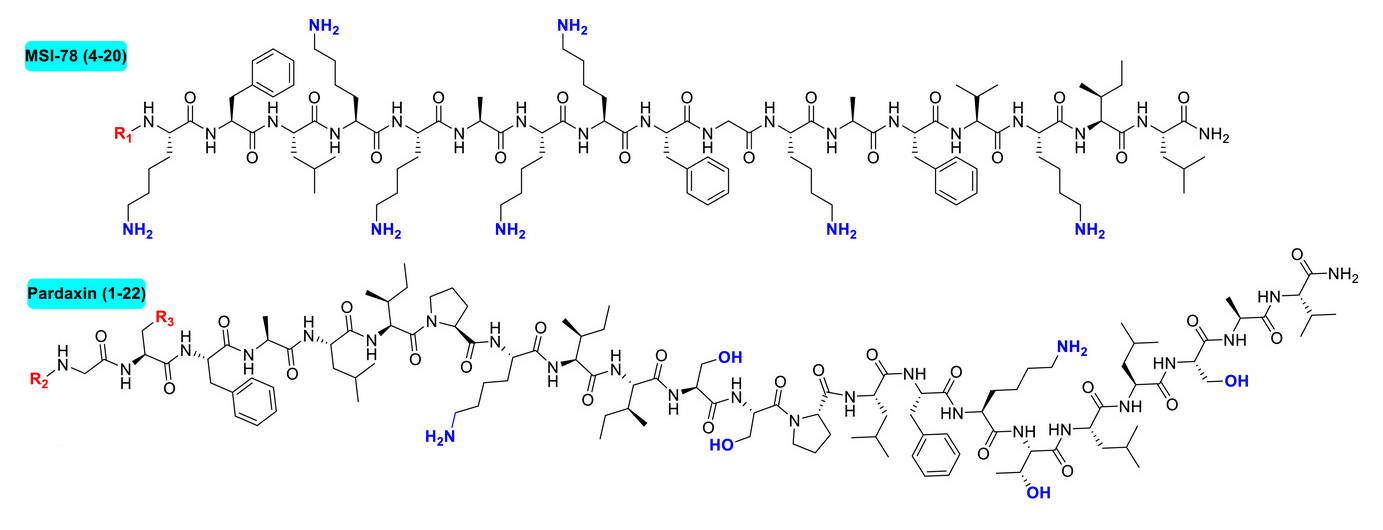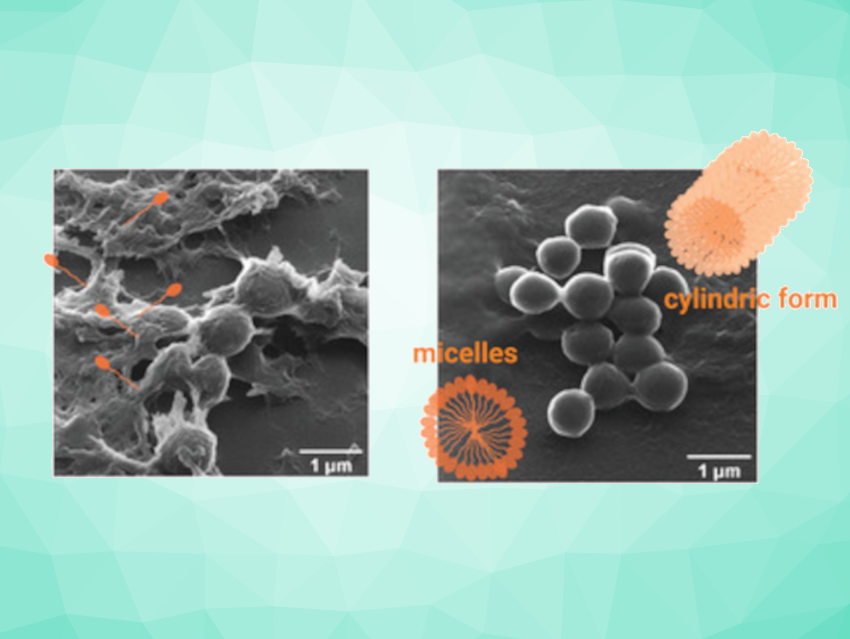Antimicrobial resistance is a growing concern because infections with resistant bacteria can be fatal. Antimicrobial peptides (AMPs) could be a promising solution to this problem. They can have potent and broad-spectrum antimicrobial activity with a reduced tendency to induce resistance. Their effectiveness can be enhanced through synthetic modifications, such as lipidation, which can result in significant conformational changes.
Neil M. O’Brien-Simpson, University of Melbourne, Australia, Wenyi Li, University of Melbourne and La Trobe University, Melbourne, Australia, and colleagues have studied the effects of lipidation on the activity of two AMPs, MSI-78 (4-20) and pardaxin (1-22) (general structures pictured below), against common healthcare-associated pathogens. The team used solid-phase peptide synthesis (SPPS), followed by the manual coupling of a fatty acid with the N-terminal amine on the solid support.

The team found that moderate-length lipidation can enhance the antibacterial activity of hydrophilic MSI-78 (4-20), but it eliminated the antibacterial activity of hydrophobic pardaxin (1-22). Lipidated hydrophilic AMPs exert their antimicrobial activity by disrupting membranes of bacterial cells, while lipidated hydrophobic peptides lose their membrane activity and, therefore, show no antibacterial activity. However, lipidation significantly increased the toxicity of hydrophobic peptides against mammalian cells. This effect was less pronounced for hydrophilic peptides.
The researchers evaluated the aggregation tendencies of the lipidated peptides. They found that more aggregated or self-assembled analogues (examples pictured in orange above on the right) showed reduced antibacterial activity but increased cytotoxicity to mammalian cells. This could provide guidance on lipidation for the future design of potent antimicrobial peptides against bacteria with a safe profile for mammalian cells.
- The effect of tailing lipidation on the bioactivity of antimicrobial peptides and their aggregation tendency,
Bruce Lin, Andrew Hung, William Singleton, Kevion K. Darmawan, Rachael Moses, Bicheng Yao, Hongkang Wu, Anders Barlow, Marc‐Antoine Sani, Alastair J. Sloan, Mohammed Akhter Hossain, John D. Wade, Yuning Hong, Neil M. O’Brien‐Simpson, Wenyi Li,
Aggregate 2023.
https://doi.org/10.1002/agt2.329




